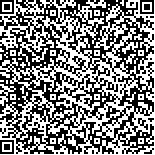| 孔蕴馨,董 栋,卓 朗.三种结直肠癌筛查评分模型在徐州市人群中诊断效果的验证与比较[J].中国肿瘤,2021,30(11):813-819. |
| 三种结直肠癌筛查评分模型在徐州市人群中诊断效果的验证与比较 |
| Comparison of Three Risk Assessment Models for Colo-rectal Cancer Screening in Xuzhou |
| 中文关键词 修订日期:2021-07-22 |
| DOI:10.11735/j.issn.1004-0242.2021.11.A003 |
|
 |
| 中文关键词: 结直肠肿瘤 筛查 评分模型 结肠镜 江苏 |
| 英文关键词:colorectal cancer screening scoring model colonoscopy Jiangsu |
| 基金项目:中国医学科学院医学与健康科技创新工程项目(2017-I2M-1-006);国家重大公共卫生服务项目(城市癌症早诊早治项目) |
|
| 摘要点击次数: 1824 |
| 全文下载次数: 446 |
| 中文摘要: |
| 摘 要:[目的] 验证和比较亚太结直肠癌筛查(Asia-Pacific colorectal screening,APCS)评分、APCS评分修订版、结直肠肿瘤(colorectal neoplasm,CN)预测评分作为初筛手段在徐州市50~74岁无症状社区人群结直肠癌筛查中的效果。[方法] 选择2017—2020年在徐州市参与结直肠癌筛查的50~74岁无症状社区居民作为研究对象,使用资格审核表评价研究对象的入组资格,所有符合条件的受试对象均签署知情同意书。使用APCS评分、APCS评分修订版、CN预测评分对符合条件的受试对象进行风险评分,分别记录评分结果和病变检出情况。比较各模型对进展期肿瘤(advanced neoplasm,AN)的诊断表现。 [结果] 共纳入符合条件受试对象1 328人,其中男性570人(42.92%),平均年龄(59.63±6.18)岁。人群中共检出AN 46例,检出率为3.46%。APCS评分、APCS评分修订版、CN预测评分评估高风险率分别为46.54%(618/1 328)、57.68%(766/1 328)、43.83%(582/1 328),APCS评分修订版高风险率高于APCS评分(χ2=33.05,P<0.001)和CN预测评分(χ2=51.00,P<0.001)。各模型评估高风险组中AN的检出率分别为4.21%(26/618)、4.70%(36/766)、4.81%(28/582),检出率间差异无统计学意义(χ2=0.29,P=0.864)。除APCS评分外,APCS评分修订版和CN预测评分高风险组的AN检出率均高于非高风险组(APCS评分修订版:χ2=8.27,P=0.004;CN预测评分:χ2=5.62,P=0.018),但与人群AN总检出率(3.46%)间差异均无统计学意义(APCS评分:χ2=0.65,P=0.419;APCS评分修订版:χ2=1.97,P=0.160;CN预测评分:χ2=1.97,P=0.160)。各模型对AN诊断的灵敏度分别为56.52%(95%CI:41.10%~71.07%)、78.26%(95%CI:63.64%~89.05%)、60.87%(95%CI:45.37%~74.91%),各模型间差异无统计学意义(χ2=5.37,P=0.068);特异度分别为53.82%(95%CI:51.05%~56.58%)、43.06%(95%CI:40.33%~45.82%)、56.79%(95%CI:54.02%~59.52%),APCS评分高于APCS评分修订版(χ2=29.74,P<0.001),但与CN预测评分差异无统计学意义(χ2=2.28,P=0.131),CN预测评分高于APCS评分修订版(χ2=48.32,P<0.001);AUC分别为0.55(95%CI:0.48~0.63)、0.61(95%CI:0.54~0.67)、0.59(95%CI:0.52~0.66),各模型间差异无统计学意义(χ2=3.07,P=0.215)。各评分模型评估高风险人群中每检出1例AN需要筛查和进行结肠镜检查的数量分别为24、21、21,均少于不进行初筛的结肠镜资源负载(29)。 [结论] 在徐州市50~74岁社区人群中使用APCS评分、APCS评分修订版、CN预测评分作为初筛手段的预测效果有待提升,但相比不进行初筛可以减少每检出1例AN所需的资源负载。若要使用风险评分模型作为初筛在徐州市进行大规模人群筛查,还需根据本地人群特征建立合适的风险评估模型。 |
| 英文摘要: |
| Abstract: [Purpose] To compare the efficacy of the Asia-Pacific Colorectal Screening(APCS) score, the modified APCS score, and the Colorectal neoplasm(CN) prediction score in colorectal cancer screening. [Methods] Asymptomatic community residents aged 50~74 who participated in colorectal cancer screening in Xuzhou from 2017 to 2020 were enrolled in the study. The APCS score, the modified APCS score and CN prediction score were used to assess the risk of colorectal cancer in eligible subjects. The detection rate of advanced neoplasm(AN) was compared among high risk subjects identified by three different assessment models. [Results] A total of 1 328 eligible subjects were included in the study, including 570 males(42.92%) with an average age of 59.63(SD=6.18) years. There were 46 cases of AN were detected with the detection rate of 3.46%. The high risk rates of the APCS score, the modified APCS score, and the CN predictive score were 46.54%(618/1 328), 57.68%(766/1 328), and 43.83%(582/1 328), respectively. The high-risk rate of the modified APCS score was higher than that of APCS score(χ2=33.05, P<0.001) and CN prediction score(χ2=51.00, P<0.001). The detection rates of AN in high-risk population were 4.21%(26/618), 4.70%(36/766) and 4.81%(28/582), respectively(χ2=0.29, P=0.864). Except for the APCS score, the detection rate of AN in the high-risk group was higher than that in the non-high-risk group(the modified APCS score: χ2=8.27, P=0.004; the CN prediction score: χ2=5.62, P=0.018), but there was no significant difference with the total detection rate of AN in the population(3.46%)(the APCS score: χ2=0.65, P=0.419; the modified APCS score: χ2=1.97, P=0.160; the CN prediction score: χ2=1.97, P=0.160). The sensitivity of each model in the detection of AN was 56.52%(95%CI: 41.10%~71.07%), 78.26%(95%CI: 63.64%~89.05%) and 60.87%(95%CI: 45.37%~74.91%), respectively(χ2=5.37, P=0.068). The specificity was 53.82 %(95%CI: 51.05%~56.58%), 43.06%(95%CI: 40.33%~45.82%) and 56.79%(95%CI: 54.02%~59.52%), respectively. The specificity of APCS score was higher than that of the modified APCS score(χ2=29.74, P<0.001); however, it had no significant difference from the CN prediction score(χ2=2.28, P=0.131), and the specificity of CN prediction score was higher than that of the modified APCS score(χ2=48.32, P<0.001). The areas under the ROC curve(AUC) of three models were 0.55(95%CI: 0.48~0.63), 0.61(95%CI: 0.54~0.67) and 0.59(95%CI: 0.52~0.66), respectively(χ2=3.07, P=0.215). For detecting every one case of AN, the number of high risk subjects requiring further screening and colonoscopy identified by three models was 24, 21 and 21, respectively, while the number of colonoscopy resource load without primary screening was 29. [Conclusion] Using the APCS score, the modified APCS score and the CN predictive score as preliminary screening means can reduce the colonoscopy resource load required for detection of every one AN case; however, it is necessary to establish a suitable risk assessment model according to the characteristics of the local population to further improve the prediction effect in colorectal cancer screening. |
|
在线阅读
查看全文 查看/发表评论 下载PDF阅读器 |